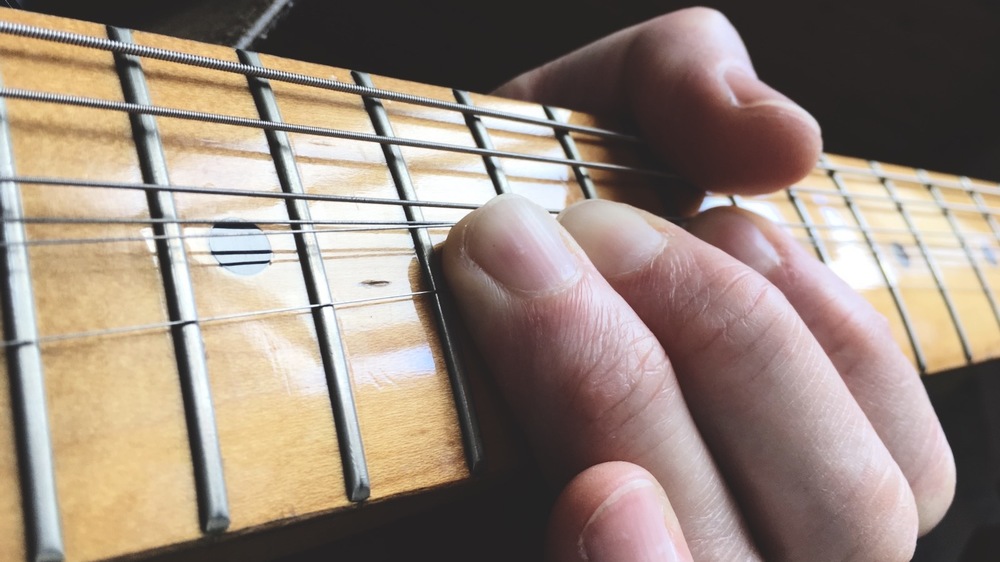We started by looking at these two common bending intervals (tones and semitones) and trying to play a major scale to get the sound in your head. Let’s take another similar example as a starting point this month too. Figure A takes a C Major Scale starting in the fifth fret on the third string. Most players use their third finger on the fretting hand to bend with but remember to support/reinforce that with your second finger in the fret behind. It’s also important to note (and think) what distance each of the bends need to be. C to D is a tone (the equivalent of two frets) for example and you want to get the pitch correct to sound in tune. This shape might not be as neat as some of the box type shapes you’ve played before so get used to the actual notes and intervals as opposed to just the fret/position.
Of course you can then experiment with the speed of the bends. Try playing them quickly so that it almost sounds like playing the notes fretted normally. Got that down? Now try them slowly to hear the pitch sliding up to the correct destination. Slow bends are heard in many genres but typically blues and rock to really add expression and feel to the note choice.
To ramp up the difficulty a little Figure B takes the C Major scale and plays it in thirds. C-E-D-F-E-G etc. This example should take some time to get happening as you have to move frets/positions and then also think of the note you’re fretting as well as how far to bend the note up. Want to stretch this idea even further? Try fourths and fifths and change scales (Minor, Harmonic Minor, Dorian) as well playing them descending too.
Figure C sounds a little more ‘licky’ and uses the old faithful A Minor Pentatonic scale. The phrase is basically in groups of three (played in 4/4) with the first note of each group of 3 played as a bend (except for the last three notes). It works well as it’s from a familiar shape and uses a familiar sound but the group of three idea creates some interest by placing the emphasis in a different spot each time around. Start slow and then increase when you’re confident with the bends, the pitch of the bends and the phrasing.
And if you’re completely struggling with this one, Figure D is what Figure C should sound like without the bends! More bends next month.











